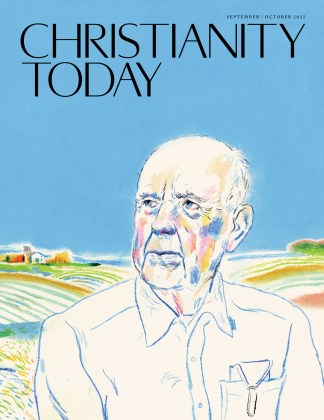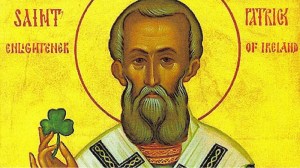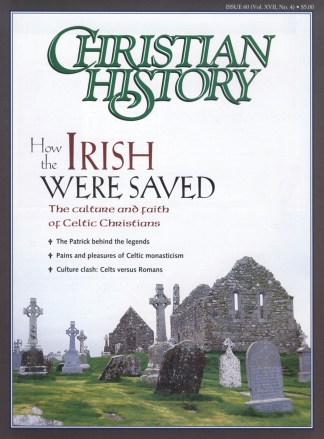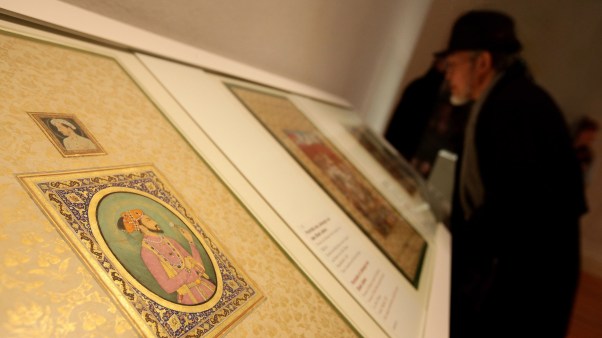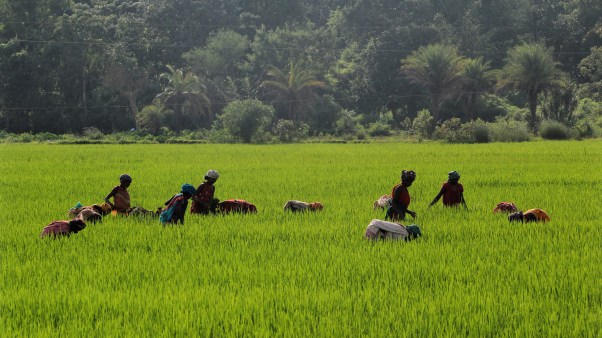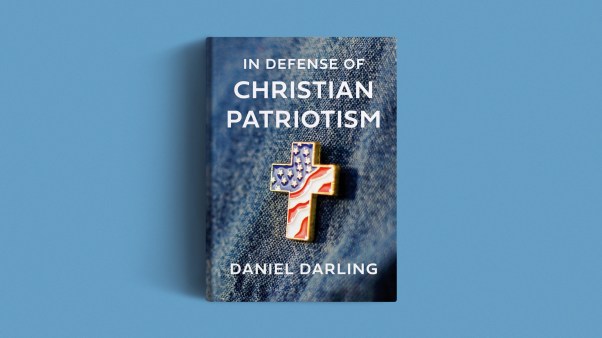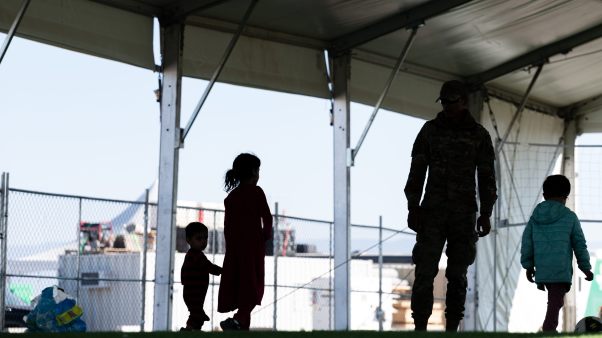In this series
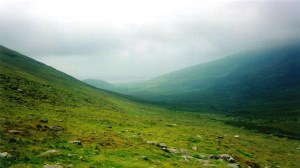
As a young woman, Íte refused her lunch so often that God sent an angel to bring it from heaven. But the seventh-century Irish abbess was not so easily turned from other ascetic practices. As a tenth-century commentary told it, Íte carried a huge stag-beetle in the flesh of her side, under her clothes, which gnawed upon her day and night.
One day, though, when the insect got loose, Íte's sister nuns immediately killed it. Their abbess sternly reproved them: "Where has my fosterling gone?" she demanded. "For that deed, no nun shall ever rule after me."
Irish monks and nuns such as Íte are famous for their severe asceticism. Even in the early Middle Ages, others marveled at the bizarre ways of the Irish.
Monasticism was unique in Ireland. It wasn't bishops in cathedrals as much as abbots in monasteries who set the pace for Christianity there. To understand Celtic Christianity, then, we need to understand Celtic monastic life, especially the ascetic marvels of Irish monks and nuns.
The routine of devotion
Daily life in monasteries varied considerably. The most populous monasteries, such as Clonmacnoise or Kildare, were run by noblemen and women who had turned to the religious life—though sometimes abbots were married men with children, who also lived in the monastery.
An Irish monastery could be a single mud hut occupied by an aging hermit, or a little family farm with a small shrine in the back pasture, or a sizable settlement with hundreds of houses, churches, and estates. The greatest monasteries of Celtic lands were large villages peopled by priests, bishops, monks, and nuns—as well as their families, along with farmers, craftsmen, traders, pilgrims, and tourists.
The officers of a monastery were often kinsmen; nephews followed uncles in the abbacy, and brothers shared the responsibility of governing the community. When a noble family dominated a particular monastery or group of monastic houses, members were able to pass offices and ecclesiastical property to the next generation. They were also able to attract donations of land and goods from powerful relatives in secular life. In fact, rejects and losers from tribal politics—younger sons, leaders of less successful clans, or women—continuously filled leadership positions in Irish monasteries.
Unfortunately, aristocrats did not always leave their politics behind when they entered the enclosure. Monastic communities sometimes assisted their secular kinsmen in battle, and occasionally even went to war against each other. In 836 the monastic annals noted the monks of Armagh came down to Kildare and actually started a fight within the holy complex of Saint Brigit. One famous king of the province of Munster, Cormac mac Cuilennáin, was also a monk, bishop, and scholar; he was slain in battle in 908.
A monk's routine depended upon his status. Those who grew up inside the monastic enclosure were educated since childhood in the Psalms, which they repeated daily. They learned prayers, hymns, Bible, theology, church laws, penitentials, and the histories of their patron and other saints. They might also have training in secular laws, which monastic scribes copied, or in the poems and sagas and histories of his people. An educated monk might even become a poet.
Those less educated might be another kind of manach, which could mean both "monk" in the sense of a man in holy vows or just a laboring client of the men and women who prayed for a living—in other words, a farmer or herder living on monastic property.
Even if he were under vows, he might have had duties other than learning and praying. Irish monasteries are justly famous for the art they produced, including metalwork, sculpture, and illuminated manuscripts. Others took more mundane jobs. One early eleventh-century poet made a list of the different members of an ideal monastery:
"Psalm-singer, beginning students, historian (who is not insignificant), instructor, teacher of ecclesiastical law, head teacher with great knowledge.
"Bishop, priest and deacon, subdeacon (a noble course,) Lector, porter, swift exorcist, the excellent holy man is renowned.
"Erenagh, his assistant, vice-abbot, cook (proper and right), counselor, steward, alternate vice-abbot."
Women's communities were normally much smaller and poorer. The nuns had to do everything themselves, unless they had a couple of tenant-farmers to supply food, or pious relatives who made donations. They spun and wove, kept their huts clean, milked their cows, and made their own meals, which could be meager.
The only exception was Kildare, Brigit's double monastery of men and women in the south of Ireland, which had a well-decorated cathedral (in the Irish sense of a large stone church) and attracted pilgrims and other visitors.
"Who can count the different crowds and numberless peoples flocking in from all the provinces," demanded Cogitosus, Brigit's biographer, "some for the abundant feasting, others for the healing of their afflictions, others to watch the pageant of the crowds, others with great gifts and offerings."
Still other monks and nuns lived out their days alone, but not in the severe and austere life of íte and her kind. Instead, in small wood-and-mud huts, they kept a cow or two, and accepted gladly the gifts of an occasional loaf or basket of vegetables from local farmers. Their desire for a solitary life and time to spend simply yearning for God informed many an Irish lyric and must have drifted through the hearts of even the busiest abbot in the most bustling monastery.
Whatever their politics or other occupations, all the monks and nuns of early Ireland were familiar—either in life or through the exquisite poetry of their religious colleagues—with the lonely huts of the hermits. As Manchán supposedly sang in this poem of the tenth century:
O Son of the living God, old eternal King, I desire a hidden hut in the wilderness that it may be my home.
A narrow little blue stream beside it and a clear pool for the washing away of sin through the grace of the Holy Ghost.
A lovely wood close about it on every side, to nurse birds with all sorts of voices and to hide them with its shelter . …
A beautiful draped church, a home for God from heaven, and bright lights above the clean white Gospels.
Desert Fathers of the northern isles
In the midst of this routine devotion, there was a passion for great spiritual achievements. The same zeal that inspired the monks of the Egyptian desert and Syria—which sent Simeon Stylites up his pole and caused the Desert Fathers to subsist on a few beans a week—drove many of these professional Christians of the rainy northern isles to fasting, intense prayer, sexual denial, and exile.
Fasting marked a Christian leader as different. What good was it to withdraw from society if one continued to resemble everyone else? The refusal of rations, in a world where starvation was common, was a special sign of self-denial and intense spirituality. Thus most monks and nuns refused meat and liquor, except on special occasions like Easter.
The particularly holy demonstrated even greater piety by denying themselves food for days at a time, or living on almost nothing. Coemgen, for instance, subsisted on grasses and water. Moling only ate when he entertained: "The holy bishop … used to fast every day except Sundays and high feast days until sunset unless guests or pilgrims arrived." Comgall went further: he refused to allow himself or his monks to eat for days at a time, thus accidentally starving some of his followers to death.
Holy men and women were also marked by ascetic prayer. Coemgen, while munching his grasses, prayed for days on end, often in intensely uncomfortable positions. He once remained so still while saying his prayers that birds nested in his outstretched palm. Other times, he lay face-down in the mud while praying.
The Céli Dé (Clients of God: a group of reforming monks from the eighth and ninth centuries) were famous for their rigorous schedule of prayers.
One of their documents records about their leader, "He sings the Hymn to Michael before sleeping, and the Hymn to Mary in the morning. … Afterwards he sings the Hymn to Michael as well as the Beati and Hymnum dicat, on Sunday at midday. The Hymn to Mary, however, he sings as well as the Beati on Sunday evening. This is what he performs: a hundred genuflections and a cross-vigil with the Beati and Hymnum dicat and Unitas or Cantemus. The cross-vigils he performs thus: Hymn to Michael with one cross-vigil, Hymn to Mary with the next, and so alternately."
In addition, the reformers were to have the Gospels read aloud at meals and to repeat all 150 psalms daily, along with several Paternosters (the Lord's Prayer). If monks felt like adding self-flagellation, they were welcome. One nun was famous for refusing to rise or sit down without chanting a prayer.
The Irish monastics were even more famous for sexual denial—not because they were prudish but because sexual behavior was one of the major means of identifying Christians in a barbarian world. Christians practiced monogamy (rather than the polygamy common in pagan Europe), avoided divorce, and shunned sexual intercourse for any purpose other than procreation within marriage. And their leaders were to be resolutely celibate.
A twelfth-century story about the much-earlier Moling tells how a laywoman of dubious morality approached him while he sat in the bath. The cleric prevented himself from sexual adventures by pinning himself to the tub with an awl.
Coemgen took precautions, too. Whenever he heard sheep bleating, he headed the opposite direction, reasoning that where sheep bleated, shepherdesses lurked; where women were, so was temptation; and where temptation existed, do did sin and damnation.
The greatest ascetic achievement of the Christian Celts was their passion for pilgrimage. In many early medieval societies, exile was considered a horrible punishment. But Irish churchmen and women took up permanent pilgrimage voluntarily, leaving behind home, families, and even Ireland itself for the wilderness. Only by cutting themselves off from everything familiar could they truly devote their minds and bodies to God. Like Augustine of Hippo, the ascetic Irish believed that every Christian was an alien in the carnal world.
Yet, in the intensely local world of the first millennium, pilgrimage could be as close as the other side of the hill or behind the gates of the monastic enclosure. Nuns, for example, rarely retreated further than their isolated communities. One aged saint explained to Columbanus that she would have gone into permanent exile if she had been a man, but her woman's nature kept her home.
But nothing stopped men from taking up the staff and hitting the road, with Patrick providing the original example. Columbanus leaped over his mother's grieving body, which was draped across her threshold, in order to head for the Continent and a life founding monasteries. The most famous pilgrim of the medieval north was Brendan, the Irishman who set off in a boat and landed, after years of wandering the seas, on the shores of the "Land of Promise." Brendan's trip to the "desert in the ocean" earned him sainthood as well as fame in manuscript versions of his adventures that circulated throughout Europe for centuries.
No thoughtless devotion
Not all Celtic monks practiced rigorous asceticism. Even the famous Céli Dé had its cynics. Màelruain, one of their superiors, remarked sourly of an enthusiastic genuflecter that "a time will come to him before his death when he shall not perform a single genuflection." In fact, the old hermit's feet seized up "on account of the excessive amount [of genuflections] he had performed in other days."
Still, those who practiced severe asceticisms knew their practices brought no benefits without heart. Though such practices could discipline the spirit, no mere genuflection, no arduous journey, could redeem a soul bereft of genuine religious devotion.
"Going to Rome is lots of effort, little profit," advised one poet; "You won't find the King you seek there unless you take him along."
Lisa Bitel is associate professor of history and women's studies at the University of Kansas, and author of Isle of the Saints: Monastic Settlement and Christian Community in Early Ireland (Cornell, 1990).
Copyright © by the author or Christianity Today/Christian History magazine.
